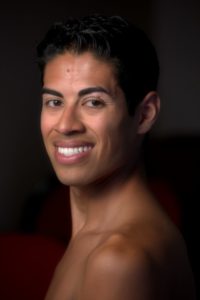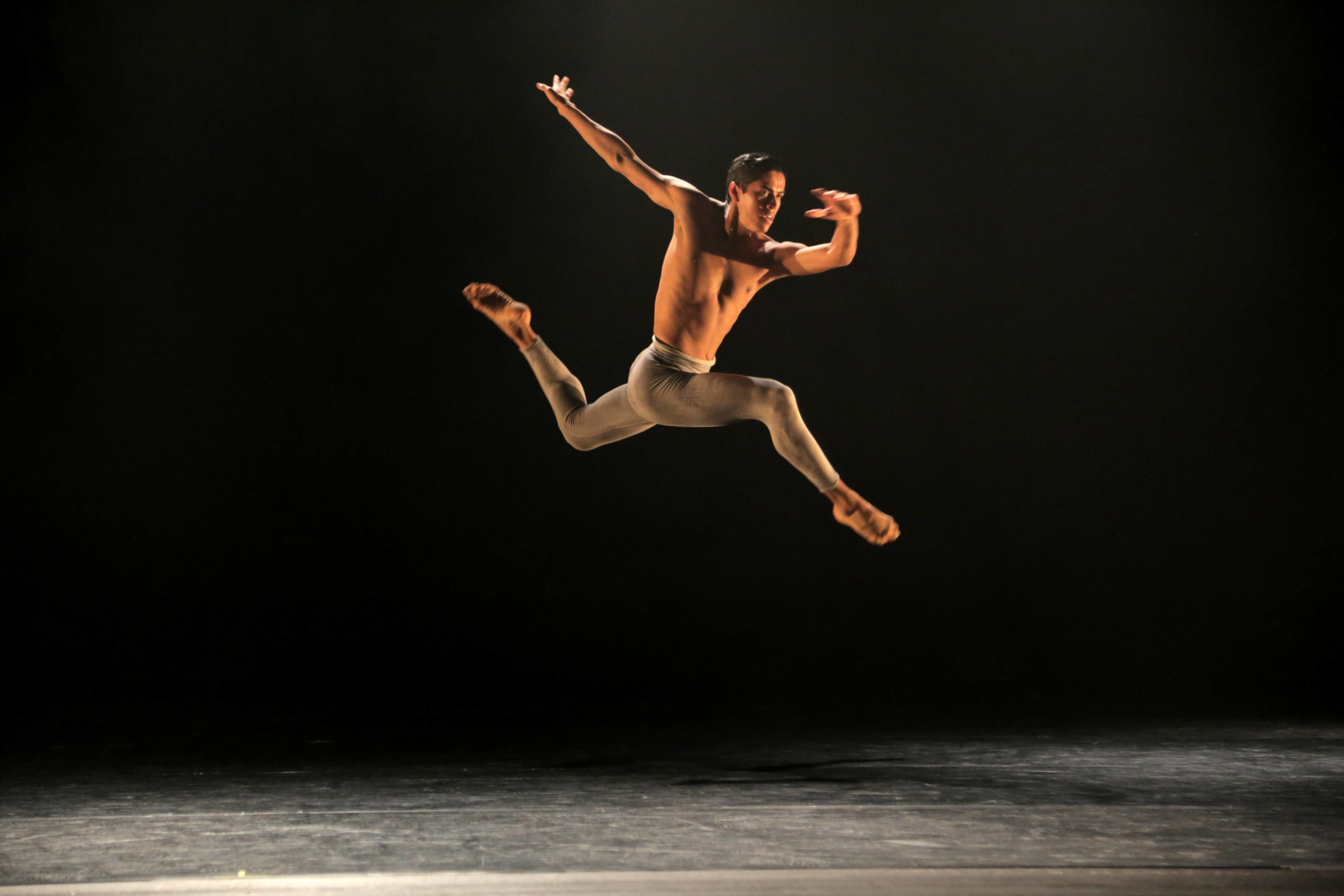Photo by Tom Hassing
The current immigration policy has sparked debate and protest throughout the country. For Mexican American dance choreographer Gabriel Mata dance is a form of protest. He uses dance and personal narrative to bring awareness to current unrest and remove the “facade” of dance choreography. Gabriel’s journey in dance began at the age of 16, the same time he learned of his undocumented status. Dance gave him the freedom that his newly discovered immigration status had stripped him of. What began as a stress reliever during a time of crisis has afforded Gabriel unique opportunities to explore the complexities of citizenship and risk-taking through dance. While preparing for his upcoming performance for SjDANCEco Gabriel opens up about his approach to dance, DACA (Deferred Action for Childhood Arrivals) immigration status and what inspires him.

Aries Jordan: Where do you pull inspiration for your choreography?
Gabriel Mata: I draw inspiration from a variety of places. My training has been in Ballet, Jazz and modern contemporary. I combine Ballet and Modern in many of my pieces because my body can access the lines of Ballet and I appreciate the groundedness that modern dance offers. I am also trained in Limón technique, developed by Mexican immigrant artist José Limón in the ’70s. His choreography accessed humanistic forms of dance expression that resonated with me. I also like the fact that it was provocative for the time it was created and intentionally makes space for the individual on stage. Another technique I pull inspiration from is the Cunningham technique developed by Merce Cunningham which is a complete contrast from Limón. He focuses on the functionality of the body in really extreme ways without a narrative.
AJ: What is your process for pairing dance moves with text?
GM: A lot of the talking dance and theater works I have created are very personal. I engage in a self-reflective process, in which I ask myself “how do I share this part of my life? How can I surprise the audience through unpredictability? And how do I layer one theme to the other?” One of my past pieces explored the theme of dreaming. I took on every angle of dreaming like nightmares, daydreams, aspirations and my DACA dreamer status. I shared my nightmares of navigating the US as an immigrant and daydreams of what I aspire to be in the future. In collaborative pieces, we research how voice can enhance movement. We look at how a push or leap can be enhanced through the use of voice and narrative.
AJ: On your website, you stated you create movement that “removes the facade of choreography,” what is the facade of choreography?
GM: Choreography has a facade that limits full access to our body and the way relationships are performed on stage. The facade conforms to stereotypical relations whether male/female or male/male. Through the use of voice, I can explore deeper relationships. The facade also includes minimizing the individual. There is so much more to the dancer than their ability to master well-known choreography. For example, when you see the Nutcracker, you always get the same kind of choreography and the same narrative every time. They may be all smiles but there is a personal narrative not being shared that is valuable.
AJ: How has your DACA status informed or influenced how you dance?
GM: I have combined the way I live with my art form. My DACA status has to lead me to believe and create radical contemporary dances that make a statement. Which is why I think the voice is so important for people who have navigated life as an immigrant whether documented or undocumented. One of my goals is to make it very clear to audiences that other narratives are out there. Many American born dancers take for granted their access and privilege that is not afforded to the immigrant community. As an immigrant, you don’t have access to grant funding and higher education needed to train or even network.
AJ: You openly disclose and explore your immigration status on stage, are you ever concerned about repercussions in this political climate?
GM: There are over 700,000 DACA recipients of many different bodies and ethnicities in the United States. My mission is to create space for others who have had similar experiences or share DACA status to see themselves. Something that concerns me is the reaction of audience members because I am a person of color, gay and undocumented. Negative thoughts do creep in the wake of the El Paso, Texas shooting, like what if someone shoots up the place because of how I identify. I am aware that there are people out there intent on hurting Hispanics within the US. I realize that I am putting so much on the line in exposing so much about myself. At times I feel like I have to tread lightly when I am performing in different places within the country. Before I perform I kiss the center of my hand and set the intention that my performance will further the narrative of what it means to be undocumented in this country. That helps to center me before any doubt starts to creep in.
AJ: You have an upcoming solo performance Where/ I begin at sjDANCEco, what can audiences expect to see?
GM: I have always held the identity of Mexican American because I was born in Mexico. This piece for me challenges any notions of citizenship based on where you were born. I came here when I was five and became who I am here! My education, profession and deepest relations with family and others have been here! To represent my experience I created an abstract design using masking tape. With voice and movement, I create spaces within the confines of the physical space. This piece tells the story of my life in which I am made to feel different even though I don’t feel different.
This article appeared in the October 2019 issue of In Dance.


